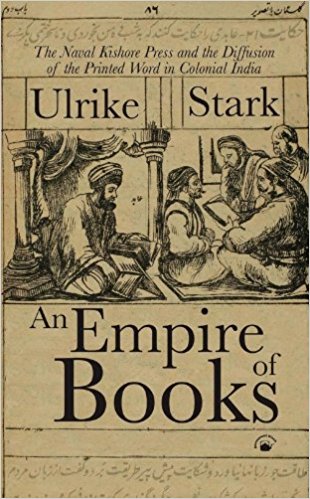Given the general state of our archives and the scant respect awarded to the preservation of books and manuscripts, it takes both courage and perseverance to accost and overcome the formidable obstacles put in the way of the scholar. If the scholar is seeking to look at the book itself as the object of research, her path is likely to be very thorny indeed. In the last decade, however, there has emerged a group of scholars who have not only begun to clear the path through the dust-laden shelves of dimly-lit interiors, but have gone on to clear enough space to create a field. And with that, they have opened the way for much further research into the social, cultural and political history of South Asia as it moved into print culture. Great credit must go to Permanent Black for sustaining and supporting the production of book history in the subcontinent: the publication of Print Areas: Book History in India (2004) is now being followed by Ulrike Stark’s monumental An Empire of Books: The Naval Kishore Press and the Diffusion of the Printed Word in Colonial India.
Other titles are in the making. Stark’s work is the first extensive study in English to explore in such depth the connection between one of the most powerful presses of the nineteenth century, colonial patronage and the boom that set in once book printing in North India was commercialized. Stark’s book is more modest in scope than Febvre and Martin’s L’Apparition du Livre (1958), which set off a flurry of research in Europe and the United States.

